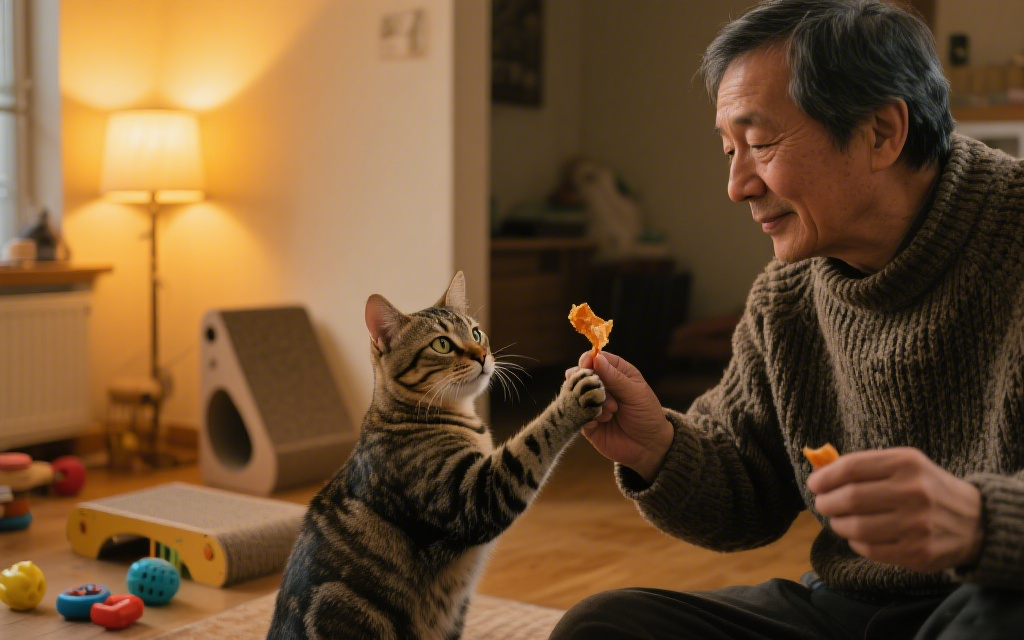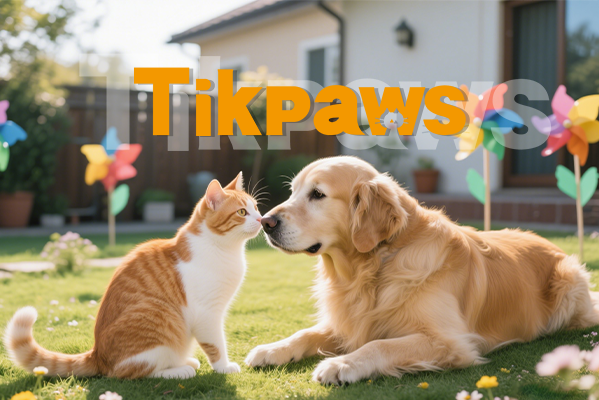
A common misconception among cat owners and enthusiasts is that behavior training is only effective during a cat's early socialization period, typically between 2 to 7 weeks after birth. However, recent scientific research and practical experience have demonstrated that adult cats still possess significant neuroplasticity—the brain’s ability to reorganize and form new neural connections. This means that even if a cat missed its “socialization golden period,” it can still learn new behaviors and overcome challenges through well-structured, scientifically backed training methods.
In this article, we will explore why adult cats can be trained effectively, outline the key scientific principles behind such training, compare classical and operant conditioning techniques, and share successful strategies and case studies to guide cat owners in building harmonious relationships with their adult feline companions.
1. Adult Cats Can Still Be Trained Despite Missing the Socialization Window

Traditional beliefs hold that the socialization window—the critical period when kittens learn to accept and adapt to their environment—is the only time when behavior training is effective. Socialization typically occurs between 2 to 7 weeks of age, during which kittens become familiar with people, other animals, and new environments.
However, research shows adult cats retain neuroplasticity throughout life, allowing them to develop new behaviors and modify existing ones in response to new experiences. This ability means adult cats, including those adopted from shelters, can learn essential daily routines such as nail trimming, litter box use, and even reduce aggressive tendencies with proper training.
This distinction highlights the difference between socialization and behavior training: socialization is about passive acceptance of environmental stimuli, while behavior training is an active process where new habits are shaped through learning and reinforcement.
For more on feline neuroplasticity and learning, check out this detailed study by the Journal of Feline Medicine and Surgery.
2. Four Scientific Foundations for Training Adult Cats

a) Behavioral Plasticity
Though adult cats are less malleable than kittens, they can still learn new behaviors through mechanisms such as classical and operant conditioning. For example, aggressive cats can be trained to reduce biting by setting clear boundaries and teaching alternative behaviors, such as playing with toys instead of human hands.
b) Application of Classical Conditioning
Rooted in Pavlov’s famous experiments, classical conditioning involves associating a neutral stimulus with a reward, prompting the cat to form a conditioned response. For example, using a clicker that emits a “click” sound before giving food allows the cat to associate the sound with a positive reward, making it more likely to comply with commands.
Learn more about clicker training and classical conditioning at ClickerTraining.com.
c) Practice of Operant Conditioning
Based on B.F. Skinner’s research, operant conditioning adjusts behavior through consequences. Positive reinforcement (such as treats or affection after a desired behavior) increases the likelihood of that behavior recurring, while negative punishment (like withdrawing attention when a cat bites) decreases undesirable actions.
For example, consistently rewarding litter box use improves toileting habits, whereas ignoring or withdrawing playtime after scratching furniture discourages destructive behavior.
d) Progressive Training Strategies
Effective training requires gradual goals and a stable environment. For shy or fearful cats, the systematic desensitization method helps build trust: starting with feeding treats from a distance and slowly decreasing that distance over time helps reduce anxiety and encourages approach behaviors.
For a deeper dive into desensitization techniques, visit ASPCA’s behavior resources.
3. Comparing Classical and Operant Conditioning: Differences and Synergy

| Conditioning Type | Trigger Mechanism | Example Training Scenario |
|---|---|---|
| Classical Conditioning | Passive association of stimuli | Calling a cat’s name followed by feeding |
| Operant Conditioning | Active behavior leads to consequence | Rewarding use of scratching post |
Most successful training programs combine both: classical conditioning establishes foundational associations (e.g., clicker sound = treat), followed by operant conditioning that encourages voluntary behaviors in response to those cues (e.g., cat sits after hearing click).
Explore practical examples combining both conditioning types on The Humane Society’s training guide.
4. Key Elements for Successful Adult Cat Training

Positive Reinforcement as the Core: Using treats, petting, or play rewards is far more effective than punishment, which risks damaging the trust between cat and owner.
Individualized Approach: Every cat is unique. Sensitive or anxious cats may need months of gradual acclimation and customized pacing.
Stable Environment: Minimizing changes in the cat’s living space helps reduce stress and supports consistent learning.
Consistent Practice: Short, frequent sessions (5-10 minutes daily) are better than sporadic long training, ensuring steady progress.
5. Case Studies and Supporting Data

A study conducted on adult shelter cats trained with positive reinforcement over eight weeks showed remarkable results:
78% reduced furniture scratching
65% adapted to routine grooming and litter box use
This highlights that patience and science-backed training can lead to significant behavioral improvements, even for cats labeled as “problematic.”
Details on this study can be found in Applied Animal Behaviour Science.
Conclusion

Training adult cats is not a lost cause. With an understanding of their learning mechanisms and a commitment to consistent, positive reinforcement-based training, even “difficult” cats can modify their behaviors. The integration of classical and operant conditioning techniques, combined with a tailored approach, builds trust and fosters a fulfilling, harmonious relationship between cats and their human families.
For more practical tips and expert advice on cat behavior, visit International Cat Care.


